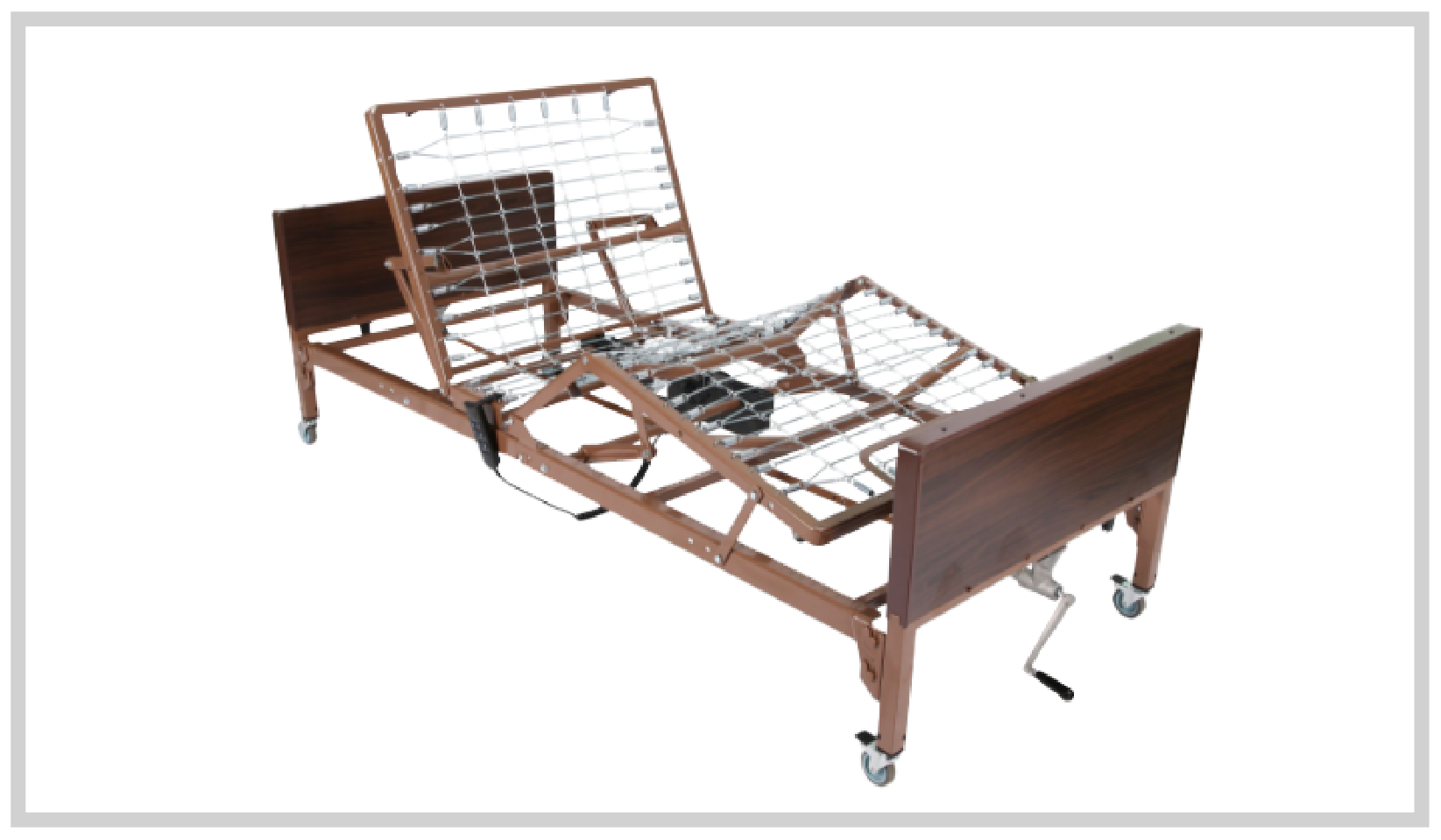






Home hospital beds are an essential part of hospice care. The adjustable head and foot sections allow patients to assume positions that are not possible with wedges or pillows. Patients can also sit upright in bed to visit with loved ones and ease shortness of breath. Because there are multiple hospital beds to choose from, this article provides helpful information about how to choose the best home hospital bed for your hospice patient.
Loud noises can be disturbing and unpleasant for an unwell person since their senses are often enhanced. Home hospital beds with smooth, quiet motors allow patients to be repositioned as comfortably as possible with less noise. Patients can also gradually lose the ability to reposition themselves independently, which is why hand pendants are very helpful. Patients can adjust the bed position, as they wish, with minimal effort. Many patients also find that half rails provide support when they roll over in the bed and help prevent falls when they get up.
Semi-electric hospital beds have motors to raise and lower the head and foot sections. The bed frame stays at a fixed height although some models can be manually adjusted with a hand crank. Semi-electric hospital beds are less than ideal for hospice patients, however. Without the ability to raise a bed to a safe working height, caregivers are at risk of painful back injuries from excessive bending and stooping. Full electric hospital beds are a great option because caregivers can easily adjust the bed height to avoid bending forward at the waist. You can find more information here about the effects of working positions.
Traditionally, hospice patients were provided with semi-electric hospital beds because they were significantly less expensive than full electric versions. The CostCare B130C full electric bed is now available for the same price as most semi-electric options. The B130C bed frame can be raised to 23″ to protect caregivers from back injuries and lowered to 15.4″ so that patients can easily get back into the bed. The painted head and footboards resemble bedroom furniture in order to fit into any decor. Optional half side rails provide support when patients roll over and help reduce the risk of falls when they get out of bed.
Hospice patients are at high risk for developing skin breakdown as they enter the final stages of the dying process. Pressure ulcers that develop at the end of life often get worse quickly with significant pain and discomfort. Therapeutic support surfaces should be used to prevent skin breakdown, especially when patients remain in a single position for comfort. Typical hospital bed mattresses have a single layer of foam that is either too soft to provide enough support or too hard to protect fragile skin areas. MedMattress Care mattresses are created from high quality foam that provides patient comfort and pressure redistribution at an economical price point. The fluid resistant, ultra-soft nylon cover reduces friction to help prevent shear injuries. Care mattresses are available in 36” x 80” x 6” size for use with the CostCare B130C bed.
Caring for hospice patients poses unique challenges as as each patient has different needs. Full electric hospital beds like the CostCare B130C help protect caregivers from injury as they promote comfort for the patient. Pressure redistribution mattresses can also help promote comfort and reduce the risk of decubitus ulcer formation. The HomeCare Hospital Beds team of experts is ready to help hospice caregivers and providers get the necessary equipment to care for patients with terminal illness. For more information, call us today at 877-414-0002 or email us at info@homecarehospitalbeds.com.
**The information on this site is not intended or implied to be a substitute for professional medical advice. If you are having a severe and sudden change in physical or mental health, please call 911, contact a local emergency facility or consult with your doctor. Always seek the advice of your physician or other qualified healthcare provider, and never disregard the advice given because of information you have received from our website.**




| Cookie | Duration | Description |
|---|---|---|
| cookielawinfo-checkbox-analytics | 11 months | This cookie is set by GDPR Cookie Consent plugin. The cookie is used to store the user consent for the cookies in the category "Analytics". |
| cookielawinfo-checkbox-functional | 11 months | The cookie is set by GDPR cookie consent to record the user consent for the cookies in the category "Functional". |
| cookielawinfo-checkbox-necessary | 11 months | This cookie is set by GDPR Cookie Consent plugin. The cookies is used to store the user consent for the cookies in the category "Necessary". |
| cookielawinfo-checkbox-others | 11 months | This cookie is set by GDPR Cookie Consent plugin. The cookie is used to store the user consent for the cookies in the category "Other. |
| cookielawinfo-checkbox-performance | 11 months | This cookie is set by GDPR Cookie Consent plugin. The cookie is used to store the user consent for the cookies in the category "Performance". |
| viewed_cookie_policy | 11 months | The cookie is set by the GDPR Cookie Consent plugin and is used to store whether or not user has consented to the use of cookies. It does not store any personal data. |